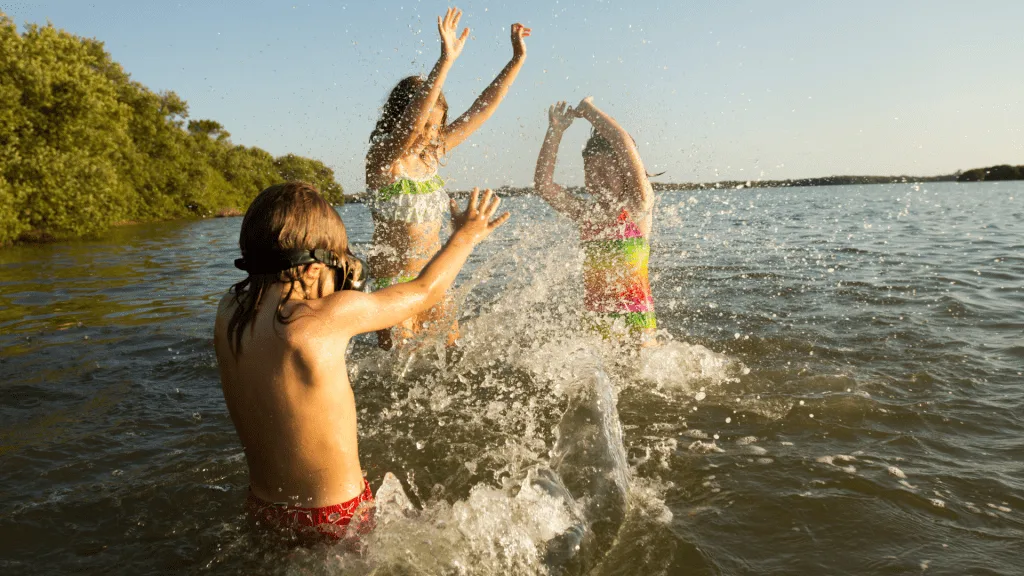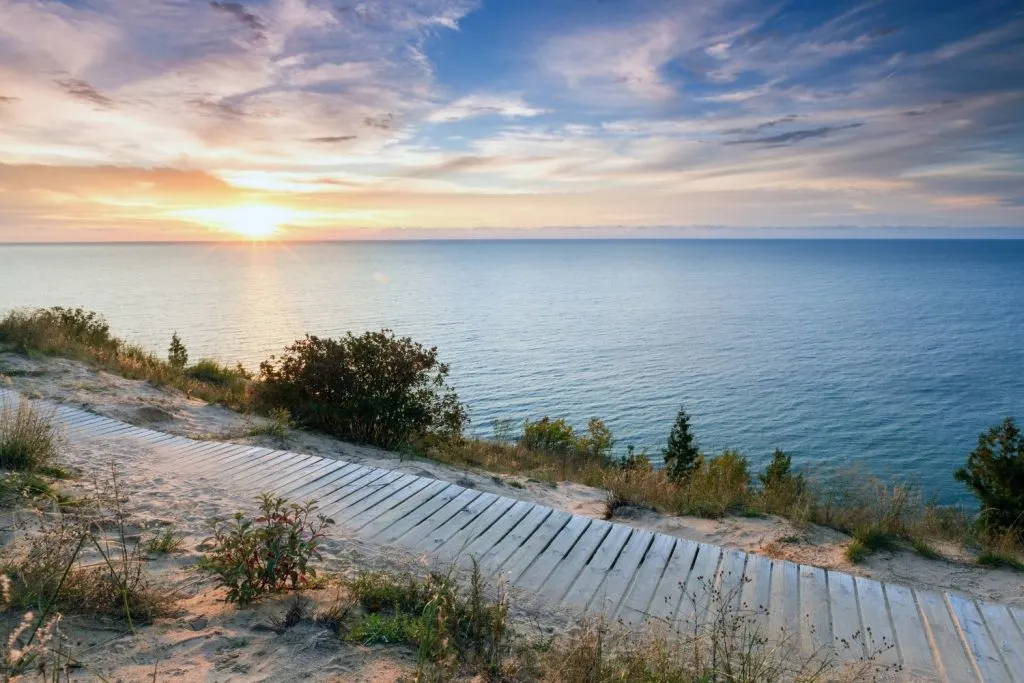Summertime conjures images of backyard barbeques, fireworks shows, and for many, a swim in Lake Michigan.
But are these waters actually safe to dip into?
We’ve put together some shocking statistics about the dangers of the Great Lakes. You might want to think twice before putting on your swimsuit.
Let’s dive in!
The Details of Lake Michigan
With over 1,600 miles of shoreline, Lake Michigan is the second-largest Great Lake by volume. It holds a whopping 1,180 cubic miles of water and reaches a maximum depth of 925 feet. It’s also home to the biggest freshwater sand dunes on the planet!
Michigan, Wisconsin, Illinois, and Indiana all border the body of water, and over 12 million people live along its shores. It’s the only Great Lake entirely within the United States and the world’s largest within one country.
Technically speaking, Michigan and Huron are one lake joined by the Straits of Mackinac, but they’re considered separate entities from a cultural standpoint.
While you might think of lakes as calm and serene, the waves on here can reach over 20 feet high. These rough waters might be why this body of water has its own “Bermuda Triangle.” According to legend, many strange disappearances have occurred between Benton Harbor and Ludington.

Is Lake Michigan Safe to Swim In?
Although tourists flock to the shores of the Great Lakes every year, it’s pretty dangerous to take a dip.
Among the five lakes, the highest death toll occurred in 2018, when 117 people perished in the water. Since 2010, there’ve been more than 980 drowning deaths. And half of those incidents occurred in Lake Michigan.
Because of dangerous currents, it sees an average of 12 deaths and 23 water rescues yearly. In fact, it’s known as the most deadly of the Great Lakes. So if you’re looking for somewhere to swim, this might not be the best choice.
Tourists tend to think of Lake Michigan as any other landlocked body of water, but it’s a unique environment with its own dangers. Longshore currents create dangerous rip tides that can take swimmers by surprise.
Rip currents can occur between sandbars or where the beach naturally dips down. They can also form around jetties, breakwaters, and piers as structural currents. And since these areas attract tourists, they can be even more fatal.
In either case, rip currents move away from the shore at a high rate of speed. Typically, they move at one to two feet per second, but they’ve been measured as quickly at eight feet per second. Even Olympic swimmers can’t outpace those speeds.
Pro Tip: Keep an eye out for these Most Dangerous Creatures in Lake Michigan.
Which Michigan Lake Is Cleanest for Swimming?
Fortunately, Michigan has no shortage of beautiful lakes for swimming, and many are crystal-clear and perfectly safe to jump into.
The Wolverine State’s crown jewel is Torch Lake. It has the highest water quality of any in the state, so swimmers and anglers won’t have to worry. Plus, over 100 bird species make their home here, so bird watchers are in for a treat. Visitors can rent luxury cabins on the shore or rustic retreats in the surrounding preserved forest.
Higgins Lake is another excellent choice. Because there’s so little pollution, the European Union designated it as a Blue Flag Lake in 2002, one of its highest honors. It’s surrounded by a state park, where you can hike 20 miles of trails, then cool off with a dip.
Big Glen Lake and Little Glen Lake boast exquisite blue surfaces just begging you to jump in! These glacial waters are incredibly pure. And despite their icy origins, they’re perfectly comfortable for swimming, at least in the summer.

What Time of Year Is Best for Swimming in Michigan Lakes?
It’s probably no surprise that lakes in Michigan are too cold to swim in most of the year. After all, average temperatures are pretty chilly between fall and spring. But the temperatures rise from June to September, and the waters hit that sweet spot.
Of course, it’s essential to consider the year’s weather before diving in head-first. When winter weather hangs around longer than usual, water temperatures are slow to rise. So while it might feel like summer outside, it can be dangerous to dive in.
Cold water shock can be deadly in the first minute of exposure, and if you manage to survive the shock, hyperthermia can quickly set in. In general, experts say that 70 degrees is the lowest safe temperature for swimming.
How to Take Caution While Swimming
If you choose to swim in Lake Michigan, there are some precautions you can take to protect yourself.
Local officials utilize a flag system to alert visitors to the risks of entering the water. Check the website before packing up for a beach day, and always respect the flags. Of course, they’re there for your safety, but new laws also make it illegal to swim when red flags are flying.
Know how to spot a rip current and how to escape them. If you start getting swept away from shore, swim parallel to the beach instead of towards it. This will get you into calmer waters without tiring yourself out.
Finally, avoid piers and other structures that can create dangerous currents. At the very least, bumping into a crusty, barnacle-covered piling is enough to ruin a good beach day.
Pro Tip: Grab your scuba gear and discover What’s at the Bottom of Lake Michigan?
Think Twice Before You Take a Dip
Lake Michigan isn’t the safest choice for swimmers, but many visitors do it every summer. If you go in the water, check the flags first and choose a safe area away from obstacles.
And don’t forget about the Mitten State’s other pristine bodies of water! Visitors have hundreds of options, and most are probably more relaxing than the choppy waters of this deadly great lake.
We’ll Help You Find the Best Free Camping in the USA
You should give it a try!
As a matter of fact, these free campsites are yours to enjoy. Every time you pay federal taxes, you’re contributing to these lands.
Become a FREE CAMPING INSIDER and join the 100,000 campers who love to score the best site!
We’ll send you the 50 Best Free Campsites in the USA (one per state). Access the list by submitting your email below: